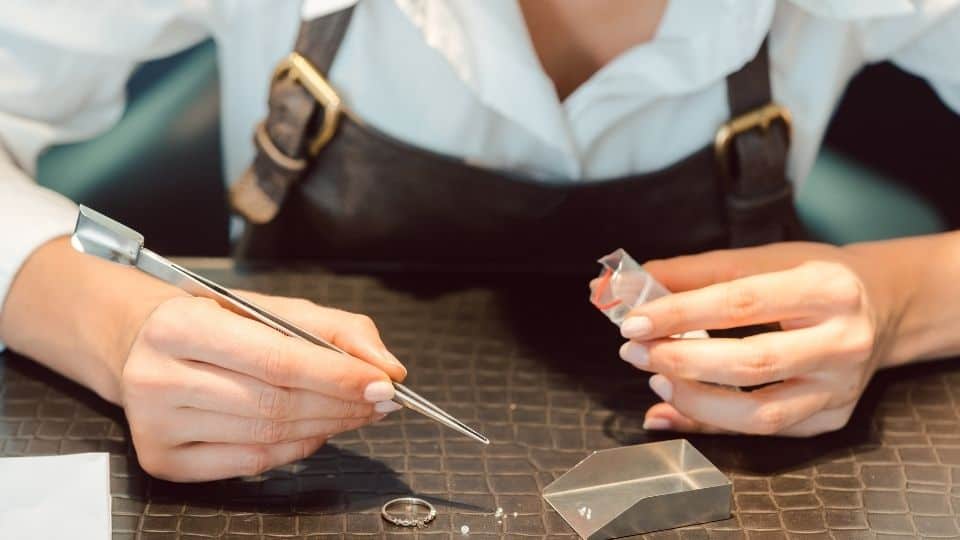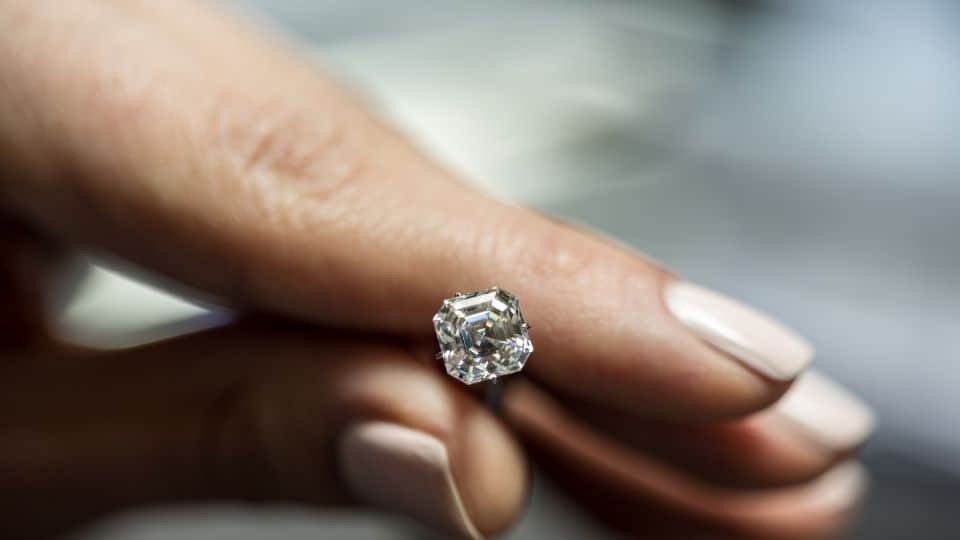Shakespeare once wrote that a rose by any other name would smell as sweet.’ Does that mean that a diamond not created by the earth is as beautiful?
Lab grown diamonds are growing in popularity, with surprisingly little difference in appearance to natural diamonds born from the earth.
Today, we’ll be defining lab grown diamonds, examining their creation, advantages and disadvantages, exploring their popularity and answering your most common, burning questions.

Want to discover the very depths of man made diamonds and how they stand up against real diamonds? Find out with the Perth diamonds expert at Claremont Diamonds.
What are lab grown diamonds?
Lab-grown diamonds, also known as lab created or synthetic diamonds, are indeed real. The key difference between lab and natural diamonds lies in their origin. While natural ones are formed deep within the Earth’s mantle over millions of years, man-made diamonds are created in controlled laboratory environments using advanced technological processes.
Lab-grown diamonds are virtually indistinguishable from their natural counterparts both chemically and physically. They exhibit the same exceptional levels of fire, scintillation, and sparkle that you’d expect from a real diamond. This makes it incredibly challenging to tell the difference between lab-grown and natural diamonds with the naked eye.
So, if you’re wondering what a lab-grown diamond is, rest assured that they are indeed real gems with all the qualities and brilliance you’d expect from a natural diamond. The main difference between them lies in their origin and the eco-conscious and budget-friendly advantages that synthetic diamonds bring to the table.
How are lab grown diamonds made?
Lab grown diamonds are not sourced from the earth but created in laboratories across the world. Skilled scientists and engineers around the world use advanced methods to mimic how diamonds form deep in the Earth. This unique way of the making process is what makes synthetic diamonds special, as they provide a more eco-friendly and ethical choice compared to traditional mined diamonds.

According to Dr James Shigley of the Gemological Institute of America (GIA), this is how lab diamonds are made:
- The first method is via high pressure and high temperature (HPHT), whereby the diamonds are produced by mimicking the conditions that form natural diamonds in the earth. Upon completion, a distinctively shaped lab grown diamond crystal is created.
- The second method is known as chemical vapour deposition (CVD) and it incorporates the breaking down of molecules of a carbon-rich gas, like methane, into carbon and hydrogen atoms. From here, the atoms are deposited onto diamond seeks, resulting in a square, broad and flat crystal.
Either method roughly requires less than a month for gem growing. However, it’s CVD-grown diamonds that necessitate further treatments such as heat or irradiation to change or enhance colouring after the growth process.
The Evolution of Lab-Grown Diamonds: From Industrial Use to Gem Jewelry Stardom
In the middle of the 20th century, man-made diamonds were first produced in a laboratory and deemed suitable for industrial use. Some 20 years later, diamonds of gem quality were first successfully produced.
It wasn’t until the mid-2010s, not all that long ago, that colourless lab grown diamonds entered and made their mark on the gem jewellery scene.
They shine as bright as real ones and can be adjusted to fit any color and style, ensuring top diamond quality. This makes them popular for relationship rings, where each couple wants something unique. More people are choosing lab-grown diamonds for these rings because they can determine diamond quality and get exactly what they want, and it’s a better and more responsible choice.
Diamond buyers seek out man-made diamonds because if you put one next to a natural diamond of similar colour, clarity, carat weight and cut – it would be impossible to tell the difference between them, with the untrained eye.
Do lab grown diamonds hold value as natural diamonds?
Many people believe that real diamonds equate to diamonds organically grown and naturally made within the earth. However, lab grown diamonds are still real diamonds in their composition. Make sure you know the difference between real and fake diamonds.
But what about the ability for lab grown diamonds to hold their value?

Despite the belief that lab diamonds hold no value whatsoever, their value will ultimately be determined by the ongoing demand. While they are chemically the same as natural diamonds, unlike real ones, they can never be considered as investment grade.
As a man-made product, it’s unlikely that the demand for simulated diamonds will ever outperform supply, but there is a continued retail demand for lab grown diamonds. While there may be some resale value (variable), their ultimate value will likely not appreciate.
So, time will eventually tell.
Can lab grown diamonds replace the real thing?
Diamonds formed within the earth over millions and billions of years grow differently from the diamonds designed and brought to life in a laboratory over mere weeks (generally 6 to 10 weeks for full development).
The two methods which were touched on up above, HPHT and CVD, provide a different growth morphology – which essentially entails how the growth conditions inevitably influence the shape of the diamond crystal.
There’s a definite place for lab grown diamonds in the market as they’re very accessible to consumers – especially for those after rare diamond colours, which is out of financial reach for most consumers.
The latest engagement ring trend includes lab-grown diamonds, as they are becoming increasingly popular due to their affordability and eco-friendly production methods. In the realm of sustainability and ethical consumerism, these diamonds are not just a trendy choice but also reflect a growing consciousness among buyers to make responsible and informed decisions about their purchases.
Are lab grown diamonds as strong as real ones?
Yes! The physical and chemical makeup of real diamonds and lab grown gems are almost identical.
This means they are essentially as strong as real ones.
As both types will have similar physical properties if subjected to authenticity tests, they will likely both pass with flying colours.
Can you spot the difference between lab grown and natural diamonds?
Let’s delve into the depths of the growth process of the two methods of lab grown diamonds in comparison to natural ones.
- Natural diamonds are typically octahedron in shape, growing in eight directions.
- HPHT lab grown diamonds are cuboctahedron in shape, growing in 14 directions.
- Finally, CVD lab grown diamonds are in the shape of a cube, growing in one direction.
The untrained eye will be unable to spot the difference between a lab grown and a natural diamond. However, professional jewellers and gemologists can, at times, spot the difference. We pay very close attention to where and how the light enters the gemstone, because in some cases, it will appear crystal-like with dominant blue refraction.

Microscopes are used to pinpoint tiny differences found the diamond’s inclusions which are indicative of how it came to be. Commonly, the synthetic status is laser-etched into the girdle they’re placed in, which is another thing a professional jeweller will look for.
With this in mind, you should always receive a certificate stating where the diamond came from, at the time of purchase.We hope this guide has shed a light on the beauty that is lab grown diamonds.
A rose by any other name would smell as sweet, and a diamond carefully created in a lab is just as stunning as those naturally mined.


Leave a Reply